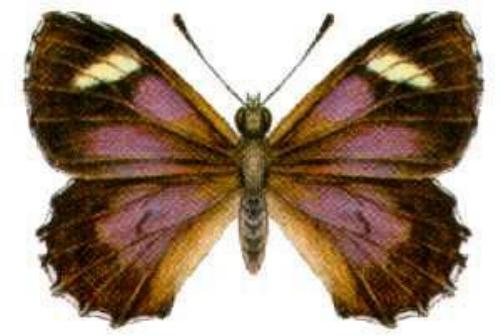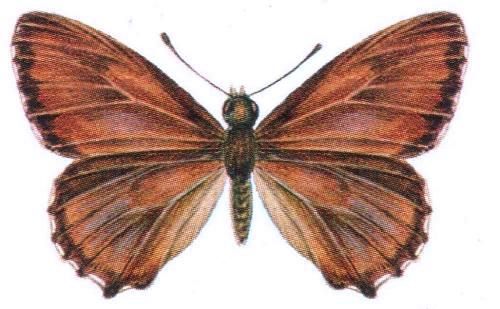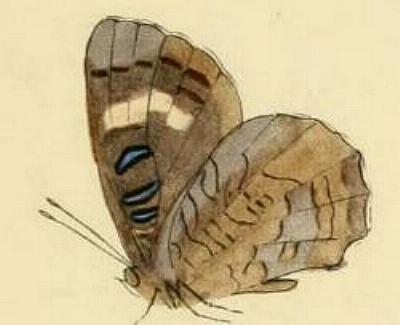
| Large Bronze Azure ARHOPALINI, THECLINAE, LYCAENIDAE, PAPILIONOIDEA | (donherbisonevans@yahoo.com) and Stella Crossley |

female
(Picture: courtesy of
CSIRO Ecosystem Sciences)

| Large Bronze Azure ARHOPALINI, THECLINAE, LYCAENIDAE, PAPILIONOIDEA | (donherbisonevans@yahoo.com) and Stella Crossley |

female
(Picture: courtesy of
CSIRO Ecosystem Sciences)
This Caterpillar is off-white, flattened, and corrugated. It has a dark head, and is sparsely covered in stiff hairs. It lives in the nests of various species of Sugar Ants (FORMICINAE), including :
feeding on Mistletoe (LORANTHACEAE), or if a bushfire destroys its foodplant, then being fed by the ants, or even feeding on immature ants, in the nest it inhabits.
The pupa is pale brown with a length of about 2.5 cms. It is formed in the host ants nest.

The male and female adults have different upper surfaces. The male is plain dark brown with a purple iridescence. The female is bright iridescent blue with broad black margins, and with a white spot near the tip of each forewing.

Underneath, they are both pale brown,
with dark brown splotches,
and with a set of black and white bars at the
base of each forewing.
Both sexes have black and white chequered margins to the wings.
The butterflies have a wing-span of about 5 cms.
The eggs are white and round with a diameter of about 1 mm.
They are laid singly near the entrance of a suitable ants nest.
The species has been found mainly in
but is occasionally found in
A number of races have been proposed, including :
Further reading :
Michael F. Braby,
Butterflies of Australia,
CSIRO Publishing, Melbourne 2000, vol. 2, pp. 712-714.
William Chapman Hewitson,
Lycaenidae,
Specimen of a Catalogue of Lycaenidae in the British Museum,
1862, p. 2, No. 3, and also
Plate 1, figs. 3-4.
 caterpillar |  butterflies |  Lepidoptera |  moths |  caterpillar |
(updated 19 November 2012, 5 January 2026)